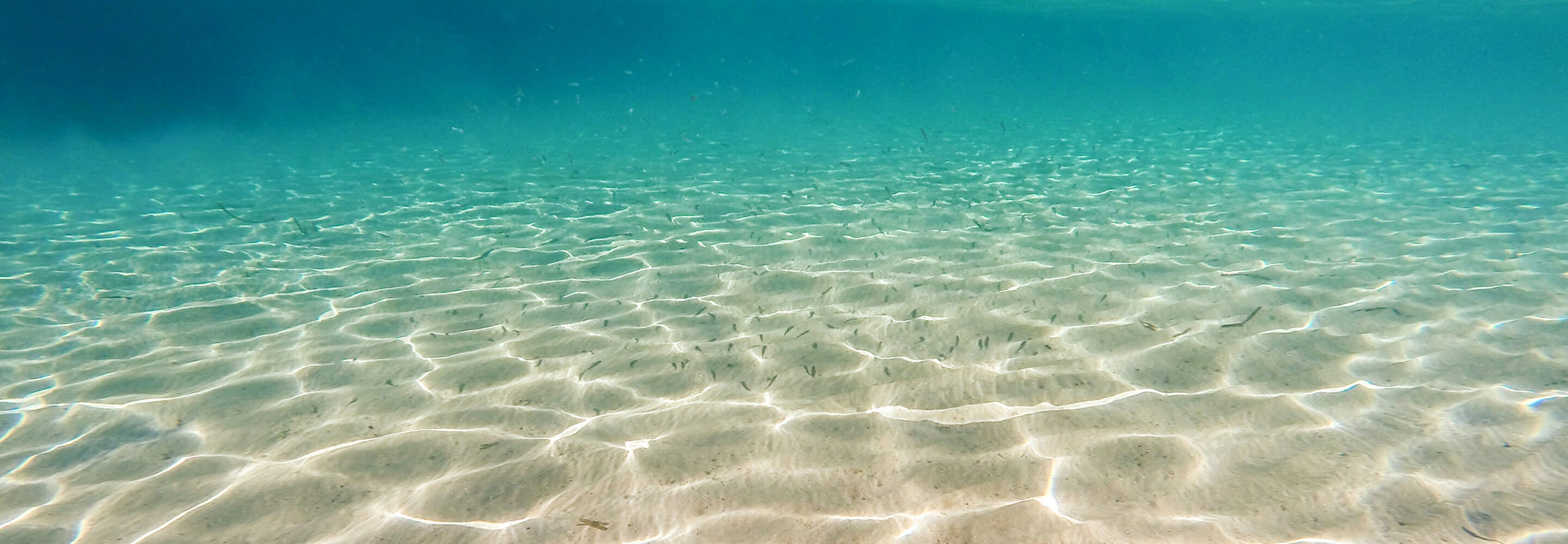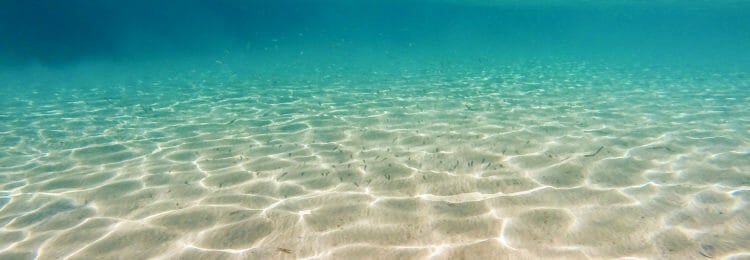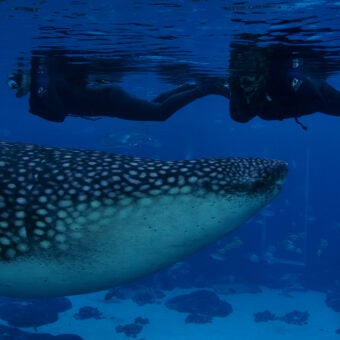-
Size
7 feet (2.1 m) -
Diet
Bottom-living crustaceans, cephalopods and bony fishes -
Range
Atlantic Ocean -
Habitat
Sandy and muddy bottoms from near shore
Physical Characteristics
- One of the largest stingrays, the roughtail stingray grows to about 7 feet (2.1 m) across its disc and 14 feet (4.3 m) long, including the tail. It can weigh as much as 660 lbs. (300 kg).
- Has a trapezoid-shaped disc with an anterior margin that is straight to slightly concave and a posterior margin that is slightly convex. Outer corners are abruptly rounded.
- Disc has numerous scattered spines, particularly across its shoulders.
- The most distinguishable characteristic of this stingray is its tail, which contains numerous rows of small thorns and is long, slender and whip-like. The tail can be about two and a half times the length of the body.
- The roughtail stingray is brown to gray dorsally and pale ventrally.
Animal Fun Fact
The roughtail stingray is capable of inflicting a painful wound with the spines that line its tail.
Diet / Feeding
- Feeds on bottom-living crustaceans, cephalopods and bony fishes.
- Like other cartilaginous fishes, the roughtail stingray can detect subtle electrical pulses underwater and can detect prey items buried in the sand.
Range / Habitat
- Occurs in tropical to temperate regions in the Atlantic. It ranges from Massachusetts to the Gulf of Mexico and Uruguay in the Western Atlantic and from the Bay of Biscay to Angola, including the Mediterranean, Madeira and the Canary Islands.
- In West Africa, it occurs not only in marine habitats but also in estuaries and the lower reaches of rivers.
- Found in sandy and muddy bottoms from near shore to about 164 feet (50 m) most commonly.
Reproduction & Growth
- Ovoviviparous- eggs hatch internally and are born as live young.
- Reproduce once per year, usually in the autumn or early winter.
- Embryos initially consume the yolk and then absorb uterine fluid from the mother. The gestation period lasts about four months with the production of two to six offspring. At birth, the disc width of the ray ranges from about 13.5-14.5 inches (34-37 cm).
Conservation Status
- “Vulnerable” on the IUCN Red List.
Additional Information
- The roughtail stingray undertakes northward and shoreward migrations in the spring and moves southward and offshore in the fall.
- Capable of inflicting painful wounds with the spines that line its tail, as well as with its venomous barb.
Sources
- www.animaldiversity.ummz.umich.edu
- www.fishbase.org
- www.flmnh.ufl.edu
- www.iucnredlist.org
- Grzimek’s Animal Life Encyclopedia
- Sharks & Rays Elasmobranch Guide of the World. Hennemann, R. M.
- Photo Credit: Dr. Al Dove





